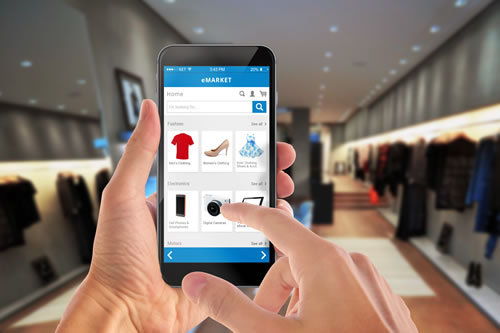Retail Brand Extensions - strategic thinking
Brand extensions are now a commonplace growth strategy for many companies. This article proposes and explains a new taxonomy for retailers to conduct brand extensions, based on a detailed examination of over one hundred retail brand extension cases.
Brand extensions are now a commonplace growth strategy for many companies. Considerations for their use are well documented for manufacturer brands. However, very little is known about how retailers can extend their brands. This article proposes and explains a new taxonomy for retailers to conduct brand extensions, based on a detailed examination of over one hundred retail brand extension cases.
Despite retailers being in a very different position to manufacturers in having different options for extending their brands, little research has focused on categorising brand extensions to act as a strategic planning tool, and there is almost no guidance specifically for retailers.
Traditional models of categorisation do not reflect the modern complexity of the retail marketplace or give sufficient guidance on all the possibilities a retailer now has for brand extensions. Although all brand extensions are a form of product entry, not all product entries are brand extensions. In this article we are only concerned with product entries which are brand extensions from the point of view of retailers wishing to use them as a growth strategy. The question arises - how can these retailers extend their brands?
Some authors suggest that brand extensions involve the use of a brand name established in one product class to enter another product class, whereas a line extension uses the established brand name for a new offering in the same product category. Line extensions therefore involve the launch of new products from the same category or product class under a familiar brand name such as Coca-Cola launching Diet Coke and Diet Caffeine-Free Coke.
An alternative view of brand extension is the market and channel perspective, which suggests that 'a brand extension means using a brand name successfully established for one segment or channel to enter another in the same broad market. However, what is meant by the term 'same broad market' is unclear in this case.
A third perspective suggests that brand extensions come in two primary forms: horizontal and vertical. A horizontal brand extension is when a brand name is applied to a new product or service in either a related product class or in a product category completely new to the firm, for example FHM Magazine launching a credit card. In essence, horizontal brand extensions describe those where a brand has diversified beyond its existing product class or market. In contrast, a vertical brand extension involves the introduction of a product or service in the same product category as the core brand, but at a different price point or quality level.
We suggest that vertical brand extensions are actually line extensions because introducing a new product or service into an existing market is an extension of the line not the brand.
From these different viewpoints, it is apparent that there is a degree of confusion. Not only are brand extensions defined in different ways, but the distinction drawn between vertical brand extensions and line extensions can be a subtle one. In addition, 'whilst these classifications and definitions are quite clear in theory, the boundaries are much less clear in practice. For example, Sony's range of mobile telephones would not be considered brand extensions if Sony's market was defined more broadly as 'consumer electronics'. We suggest they are inadequate for explaining the different types of retail brand extensions. Some authors would define Marks & Spencer setting up a flower shop as a brand extension, while the Post Office selling travel insurance would be described as a line extension. Yet, there are clear distinctions in these retailing examples that should be considered in any taxonomy of retail brand extensions. One point of difference we need to consider is whether a retailer uses their own brand, a combination of the retailer's own brand and a manufacturer's brand, or solely a manufacturer's brand. We must also consider whether the retailer is entering a new market, introducing a new product in an existing field, or extending an existing product. The current definitions of brand and line extensions in the literature fail to account for these distinctions. As a result, a new brand extension taxonomy is needed that will be more comprehensive for retailers.
We have excluded from the taxonomy the following situations: common ownership, where there is little or no relationship in terms of product proposition, although there might be some common infrastructure and supply chain (e.g. Argos/Homebase); distinct brands, where there is no connection discernible by the consumer, usually designed to target a different consumer group in terms of age or price/quality trade-off (e.g. H&M/COS/Divided; Urban Outfitters/Anthropologie; Halfords/Cycle Hut); and subtly connected brands(e.g. Banana Republic/Monogram). We propose three broad categories with which to categorise the extension examples we found: new markets; new products; and extension of existing products. Retailers can engage in any of the strategies listed on a temporary or permanent basis. The taxonomy is based on an analysis of over one hundred retail and manufacturer brand extension examples, which were collected and categorised by an expert panel of academics and practitioners. The examples were collected from the media, observation work, executive interviews, and the literature.
The retail brand extension taxonomy is described below.
1) Accessing New Markets
A move into a new market happens when a retailer moves into a market where they have not had any previous involvement. Within this broad category five subcategories exist, namely:
1a) Using an alternative retailer as a channel. Here, a retailer sells own-branded products or services through another retailer's stores to enter a new market. In this instance, the retailer's own brand behaves like a manufacturer brand. Examples of this include French Connection (FCUK) Contact Lenses being sold in Vision Express Stores.
1b) Modifying the existing retail format. In this sub-category, retailers modify their format to enter a new market, for example B&Q's entry into the 'trade' market via B&Q Warehouse stores, which differ markedly from standard DIY stores. In addition, retailers can have distinct formats, layouts and ranges, but no brand or fascia distinction.
1c) Creating own-labels or sub-brands. In this instance, retailers use their own brand or sub-brand to enter a new market. For example, Boots entered the sandwich market selling their own brand Shapers and Combinations ranges. Boots had no previous involvement in this market.
1d) The use co-branding. Here, a retailer uses another brand, as well as their own, to enter a new market. Co-branding is defined as the pairing of two or more branded products to form a separate and unique product. The entry of Tesco into the residential fixed line telecommunications market is a cobrand with Cable & Wireless. Co-branding is sometimes referred to as cross-branding or dual branding.
1e) Using an existing manufacturer brand. With this strategy a retailer uses a manufacturer's brand to facilitate market entry, for example Sunglass Hut's entry into the watch market. Sunglass Hut looked to expand into a new market where the principles of their existing brand could be transferred. The company leveraged a large range of branded watches such as Timex, Casio, Seiko and Sekonda to develop a new retail brand called Watch Station.
2) Developing existing markets
In this category, retailers are already involved in a market, but introduce new products with which they were not previously involved. Three sub-categories exist:
2a) Create own labels of sub-brands. Here, retailers use their own brand or sub-brand to introduce new products into an existing field.
Companies may also use distinct formats, layouts and ranges in this sub-category, but with no fascia distinction (for example Tu inside Sainsbury's).
2b) Use co-branding. With this strategy, retailers use a combination of brands to introduce new products in an existing field. An example is when McDonald's launched a Star Wars feature meal to coincide with the launch of the film. This example also highlights the fact that the product may only last a month or two and thus extensions can be temporary.
2c) Use an existing manufacturer brand. In this sub-category, retailers use an existing manufacturer brand to introduce a new product or service into an existing market. For example, Jessops decided to sell branded ink cartridges (Hewlett Packard, Epson, etc.) for inkjet printers to complement their inkjet printers. This was a branded entry into an existing market.
We have developed this new retail brand extension taxonomy that distinguishes between the different types of retail brand extension and explains the way they work.
Many retail brand extensions are often very late in terms of market development. Although successful, these extensions were made when the product or service area was reaching a high level of maturity and there was no first-mover advantage for retailers. In the future, it is likely that retailers will become more competent and confident in extending brands into new areas. The above taxonomy could be useful to both retailers and manufacturers thinking of becoming retailers. We suggest that all retail brand extensions can now be viewed within the context of this new taxonomy, as opposed to the categories suggested previously in the brand extension literature. With many manufacturers wanting to become retailers, and retailers acting increasingly like manufacturers, the distinction between the sectors is increasingly blurred. The development promises more exciting opportunities for all.
A version of this article first appeared in The Retail Digest.




